I usually know a good location when I see one. The Red Villa, as the nickname goes, looked like a place with a story. Mentioned on very few websites, save for one or two about modern history and architecture, this western-style family home oozed exploration appeal. Surrounded by a thick, Japanese bamboo grove and well away from any roads, it remained hidden for years, slowly being consumed and digested on course for its inevitable return to nature.
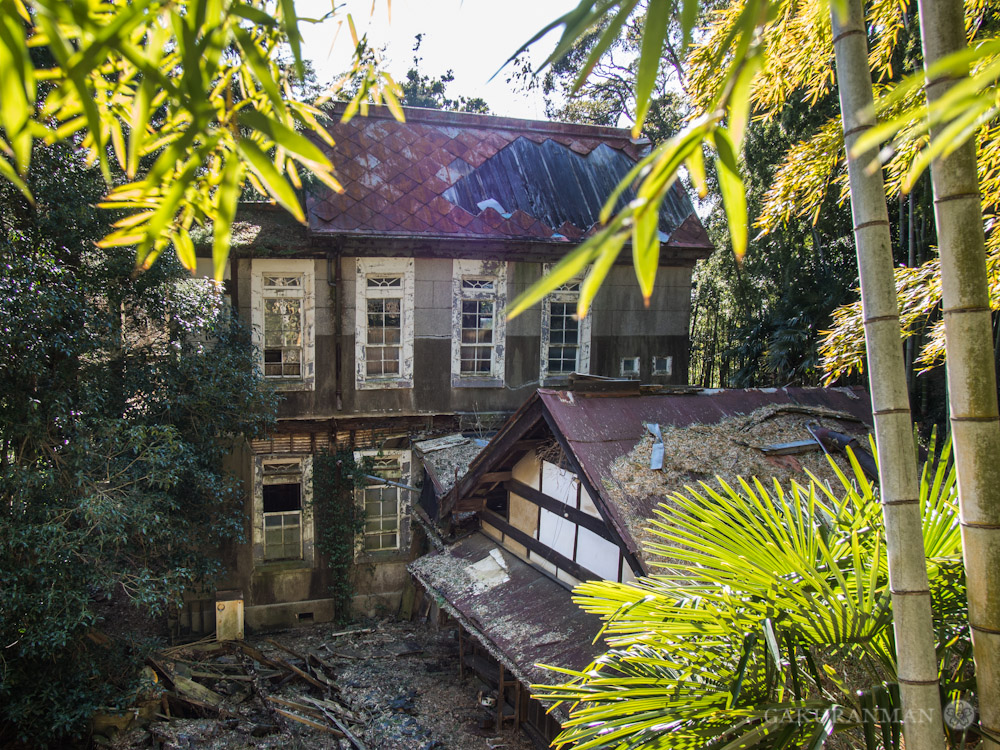
A previous expedition to a similar red house hidden in the woods unearthed a fascinating story that linked an aristocratic family to famous politicians, a wealthy English gentlemen and a flourishing pearl business. Readers will no doubt remember the tale of the Royal House – still not fully solved to this day. So it was then with high hopes for curious secrets yet undiscovered that I ventured to this newfound abode deep in the countryside. And as you might have already guessed – I was not to be disappointed!
The Approach
Finding the exact location was tricky. The villa was surrounded by nature, situated in a rural village mostly made up of agricultural land. We half expected to see some farmers out and about in the neighbouring fields as we quietly made our approach, but we were lucky to pass through unnoticed. From a distance the house did indeed look spectacular. My haikyo buddy and I caught glimpses of the red roof through the bamboo stalks ripping their way out of the soft earth. We settled on a high vantage point to shoot a few exterior shots before heading closer.

The Red Villa was built in 1922, a mixture of Japanese and Western architecture and had the luxury of two floors, inlcluding a balcony. Several other buildings were sprawled out in the opening of the bamboo grove – mostly wooden shacks of the sort I’ve previously found dozens of obscure chemicals and medicines. These buildings were certainly looking worse for wear however, and nature really wasn’t holding back. Bamboo grew right up through the floors, piercing the ceilings and bursting out towards the sky. So much was the damage and mess of wood that we didn’t spend too much time in the shacks. A couple of old television sets did catch our eye though, and the glint of the warm sun.
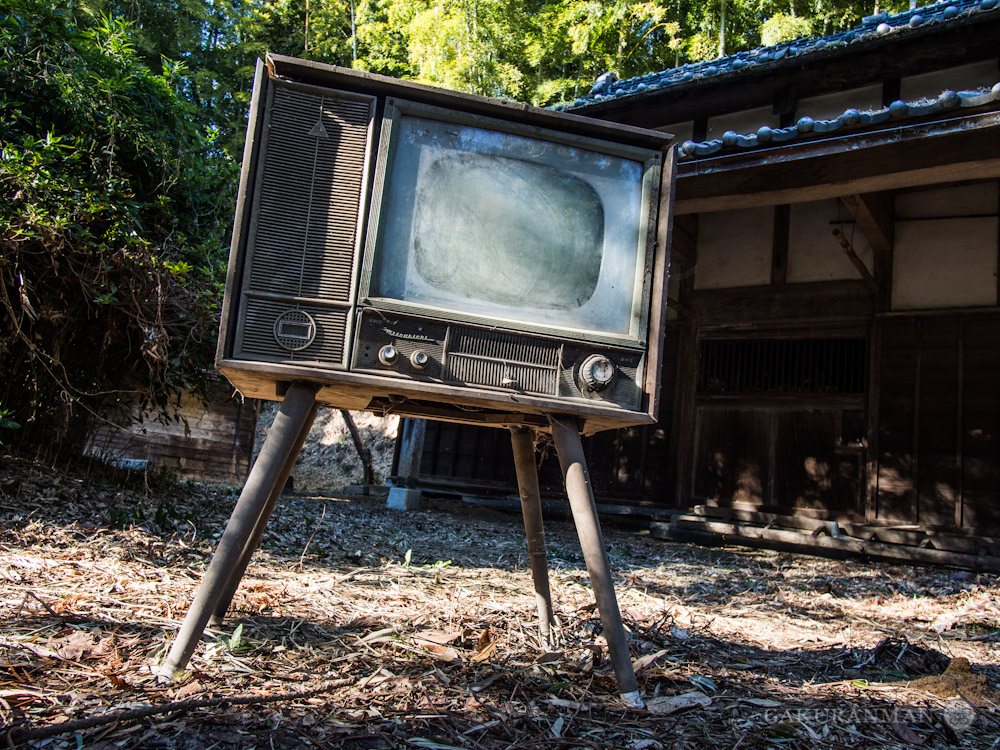
But it wasn’t long before we set foot inside. It wasn’t hard either – the gaping holes in the building and perilous slanted walls of some parts of the abode were big warning signs that this place was, quite literally, on its last legs. First to greet us inside the Red Villa was the last remaining occupant. A stunning doll perched atop a small table. In remarkably good condition, too, given how exposed to the elements the room was!
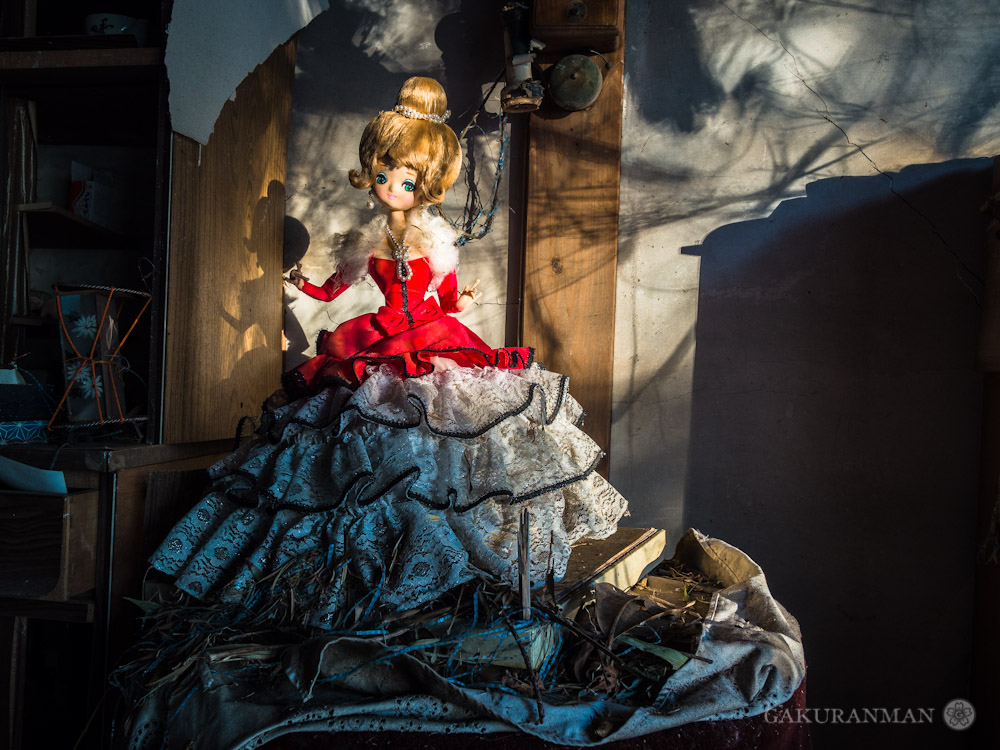
Something else caught my eye in the living room. A collection of family photos. Something that, in a few hour’s time, would become a major theme for this haikyo. Oh! The things we find hidden in dark closets and hidey holes…

From left to right, my best guess thus far is that we have the mother, son, grandmother and the father and son in the small vintage photo at the front. Despite some sleuthing, we weren’t readily able to put names to faces, although two prominent family names did appear frequently in the house. The Matsunobu family and the Sekino family.
On site was a well, engraved with the kanji ‘松’, suggesting that the Matsunobu family lived here and owned the land. Inside the house was also a traditional Japanese safe – empty, of course, with the family characters for Sekino. It wouldn’t be too much of a stretch to consider that the two families were brought together through marriage and that they lived together under the same roof, as happens even today in Japan.
Titbits Galore
Things got really dusty as we worked our way upstairs. I tried not to think about the materials made to build the house, but piles of roof tiles and broken sections of plaster covered the floor in mounds. It looked as though the structure of the house was made of wood and earth, but I couldn’t help but wonder whether or not asbestos had been used at some point. Both my friend and I paid later, coughing for hours afterwards to get rid of all the dust we’d inhaled. I have a asbestos-grade mask at home exactly for occasions like this, but the majority of ruins are never that dusty, usually with open windows for fresh air to work its way inside. For some reason this location was particularly nasty.
All that was washed away once we turned the corner at the top of the staircase. A balcony looked out onto the bamboo grove around us. On it was a classic chair, slightly green and weathered from the years past. It wasn’t hard to imagine the owner resting here decades ago looking out onto the nearby lake. It must have been a beautiful sight indeed!
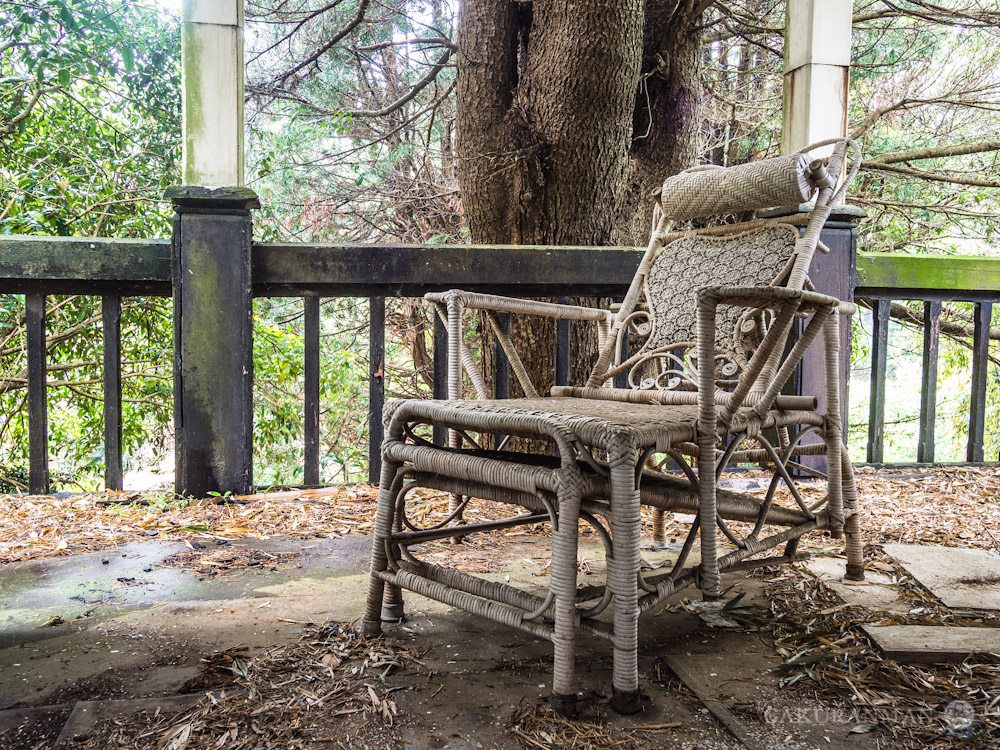
Connected to the balcony was a rom filled with chests of drawers and a large bookcase, still laden with ageing titles. Evidently quite a few people had been here before us, as most of the contents were shamefully strewn out all over the floor. There were plenty of interesting little items dotted around however, many of which had that delicious vintage look which I adore.
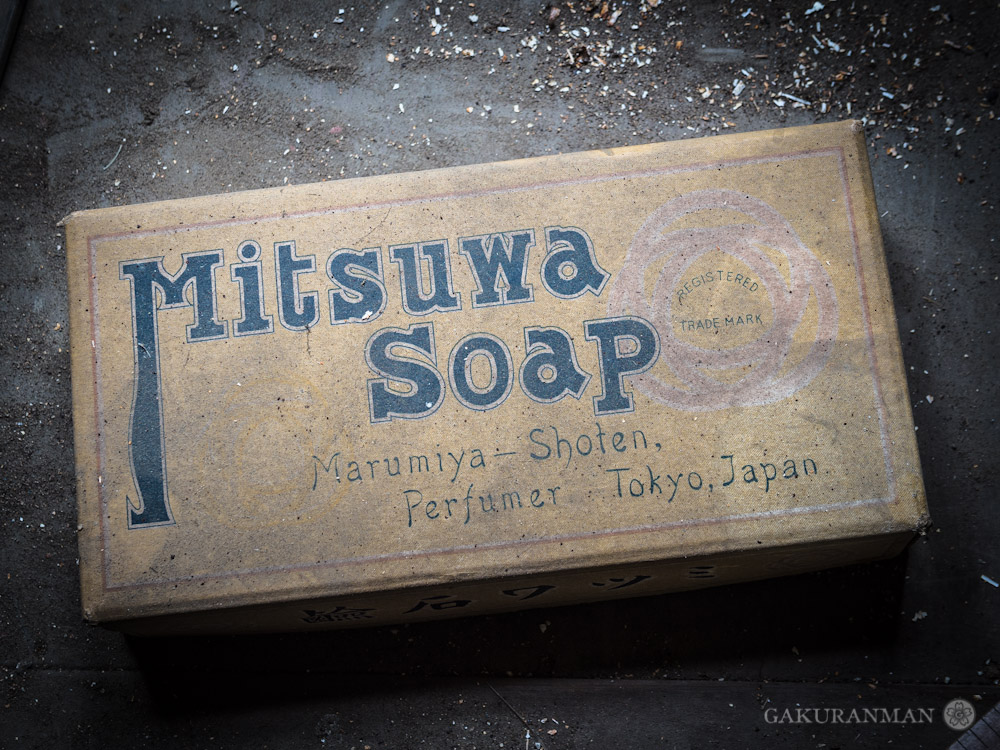
A small box we discovered was filled with old scrolls. One of them turned out to be what is known as a 改元詔書 – an Imperial decree changing the name of the era. In this case, marking the beginning of the Taisho era of Japanese history (大正) in 1912. The document bears the Imperial seal of Japan and is very similar in style to the one I found in the Royal House. I’m not certain how these documents came to be acquired, as they seem a little too nice to be given out to regular folk. Perhaps those wealthy enough purchased them, or were in positions that enabled them to come by a copy. Anyone fancy translating the old Japanese?
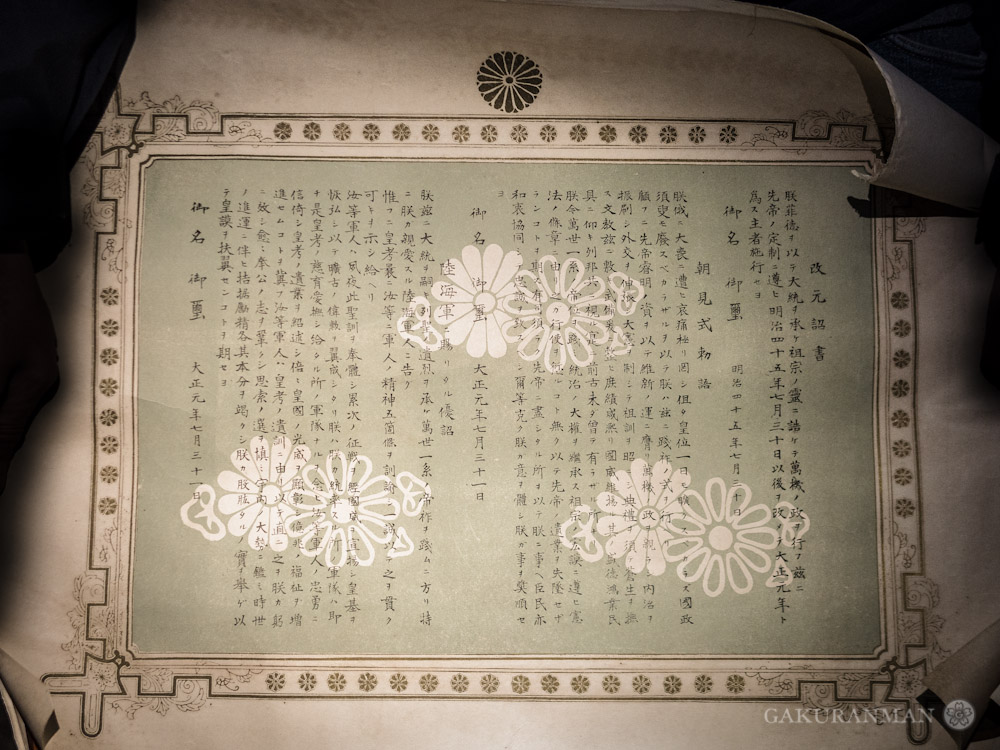
The real draw however, was the second floor bedroom, complete with a rusting queen-sized bedframe, two closets and an ensuite toilet. A neatly framed portrait of a family relation lay on the bed.
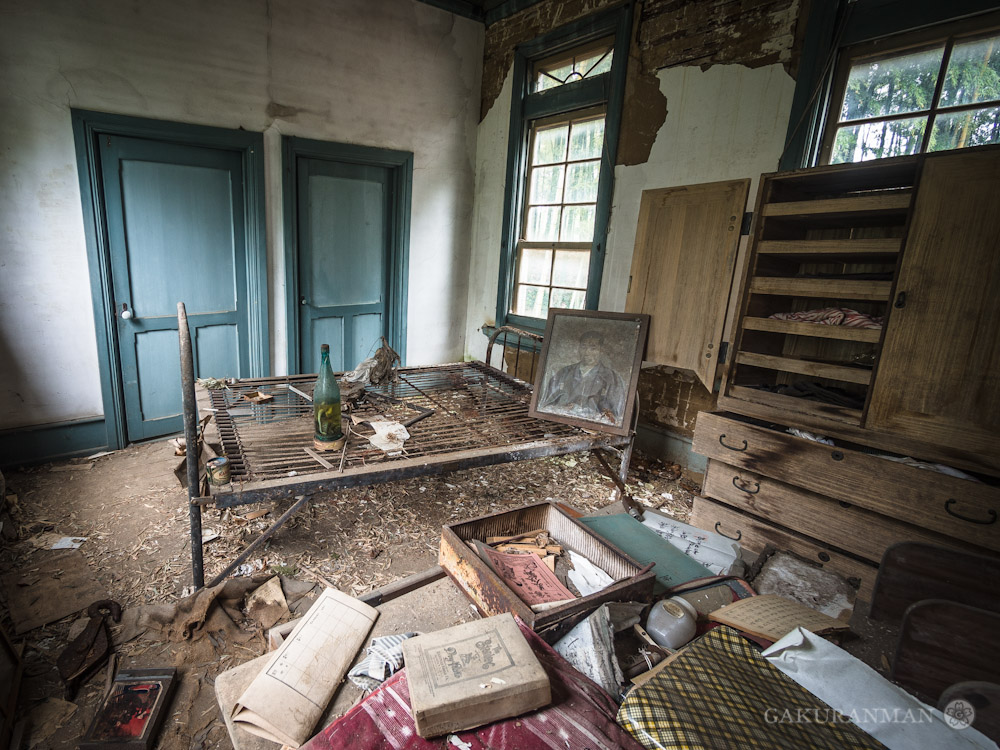
The occupant of this room seems to have been one Mrs. S. Matsunobu. A pile of old postcards dating back to 1956 and a vintage fashion magazine dating 1957 give us some idea as to the years the house was in active use. Judging by other older photos in the house, I was tempted to think that this house was abandoned several decades ago, but a modern architecture magazine published in December 1983 shows a vivid picture of the house in great condition, suggesting that it may not have been abandoned until much later.
Mrs. S appears to have worked with clothing, as there were numerous fashion magazines in her closet, as well as patterns for sewing and stitching and some rudimentary tools. It’s not clear if it was her occupation or just a hobby. She was also an avid enthusiast of English, as several handwritten English notes and textbooks stood testament to. The inside of her closet was a grand sight to behold in itself. The walls had been plastered with various vintage pictures or colourful motifs which I found a very curious sight to behold.

But as fascinating as Mrs. S and her closet were, the second closet was to be the take-home surprise of the trip, as of yet completely unexplored and undocumented by fellow haikyo enthusiasts, as well as more than a tiny bit obscene!
The Mysterious Closet
With all the dust and grime within, it was extremely lucky that my explorer instincts took me inside this particularly nasty room at the back of the second floor bedroom. The door only opened just a crack. Inside, a faded black cloth was draped haphazardly across the doorway like a spiderweb. I switched on my headlamp, held my breath and, grimacing, peered inside the tiny room.
More crap. And dust. Not somewhere I want to be really, but something about this room just draws me in…
Covering my mouth and nose with the sleeve of my coat, I slip inside the closet-sized room. It appears to be a studio of some kind. Shelves line the walls to my left and right, piled with the telltale signs of a laboratory – jars filled with curious chunks of red matter, white powders and bottles of rancid liquids. On the floor my old friend, a snake in a jar.
Why is it that I seem to come across such bizarre collections of objects in the ruins I visit?
In front of me, a tiny, square window casts a dim light onto the desk. What was unusual about this window was, apart from its diminutive size, the fact that it had two colour filters set up in such a way as to be slid across when needed. I was immediately suspicious.
What sort of person would need a porthole-sized window and red filter?
It wasn’t long before I had my answer. Studying the chemicals on the shelf, I picked out some English words: ‘Eastman Kodak’. Hmm. ‘The Stanley Dry Plate’.
A photographer?!
Indeed, the room in which I stood was a personal darkroom! Other clues such as specialised lightbulbs, photographic plates and wooden holders littered the floor. On one shelf, a strange bottle filled with amber-coloured chunks of a hardened substance that looked like a resin of some kind. It turns out, after reading the Japanese label right-to-left, that this substance is known as ‘gum arabic’, made from the sap of the acacia tree. Historically it was used in gum bichromate photography, mixed with other chemicals and a pigment to create a coloured photographic emulsion. The gum permanently bound the pigments to the paper.
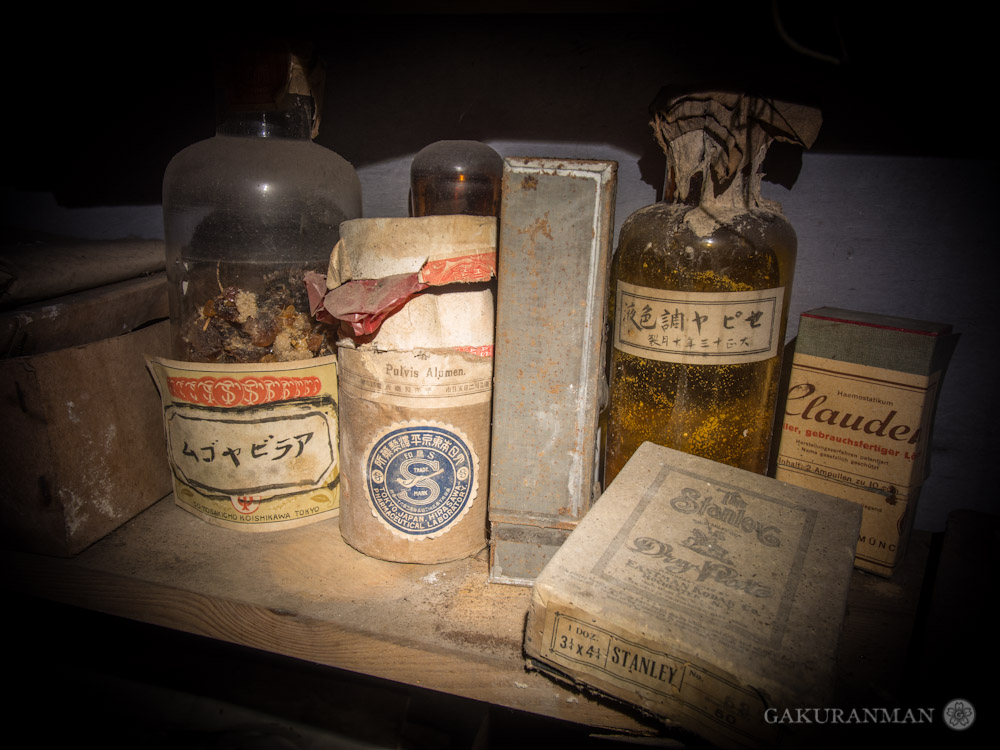
Another historical item of interest, the Eastman Kodak Stanley Dry Plate box, gives us more dates to work with. The dry plates were produced by the Stanley Brothers who established their company in 1888 and sold it to George Eastman (Kodak) in 1904. I scanned around. Lo and behold, carefully stacked along the top shelf of the darkroom were piles of small, rectangular dry plate boxes marked ‘写真’ – photographs…
Just what sort of images would they contain!?
I could barely contain my excitement as I called out to my buddy about the find. My friend, a film fanatic, was obviously pleased about the discovery of boxes of glass negatives! Together we carefully opened them after years of storage. Separated by thin white pieces of paper, each glass panel contained the ghost of a picture. Held up to the light pouring in through the windows, we were able to make out various scenes from the Taisho and Showa eras of Japanese history. Some plates showed pictures of the Red Villa itself, including what looked to be construction pictures of the very same building. As the house was reportedly built in 1922, that dates some of the pictures to be nearly 100 years old!
Below is a favourite of mine – a group of men, perhaps a construction crew who worked on the house.
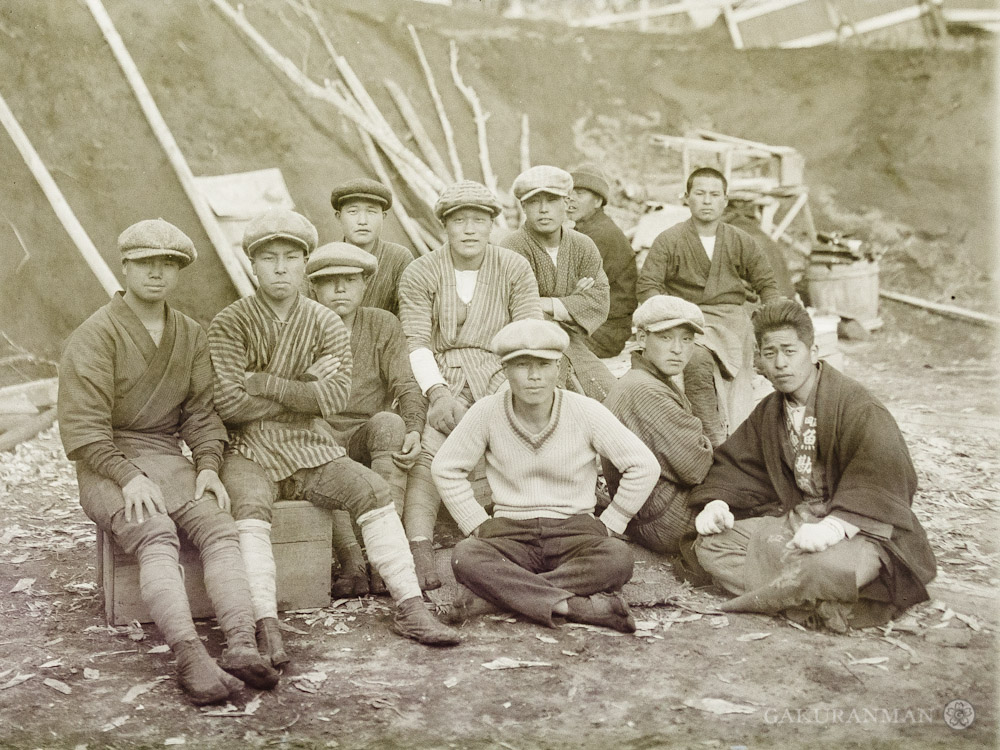
Another showed the Red Villa in its heyday. In one picture you can just see the nose of the pet dog poking out from behind a door.

One Man’s Collection
You might have thought the discovery of pictures dating back decades would be enough of a surprise in itself. But then why would I title this article as the ‘Pink Secrets’ of the Red Villa..?
Yes, the real shocker came when my explorer buddy opened up one of the larger dusty boxes of dry plates.
“Oh My God! Mike, you’re never going to believe this. Get over here now!!”
Taken aback by my friend’s outburst, I wandered over to peer at the glass plate he was holding up to the window. Something was strange.
Is that…flesh? And… No… It couldn’t be, could it?
It was. Even in its negative form with the colours inverted, I could still clearly make out the curvy shape of one beautiful Japanese woman.
Pre-war porn!
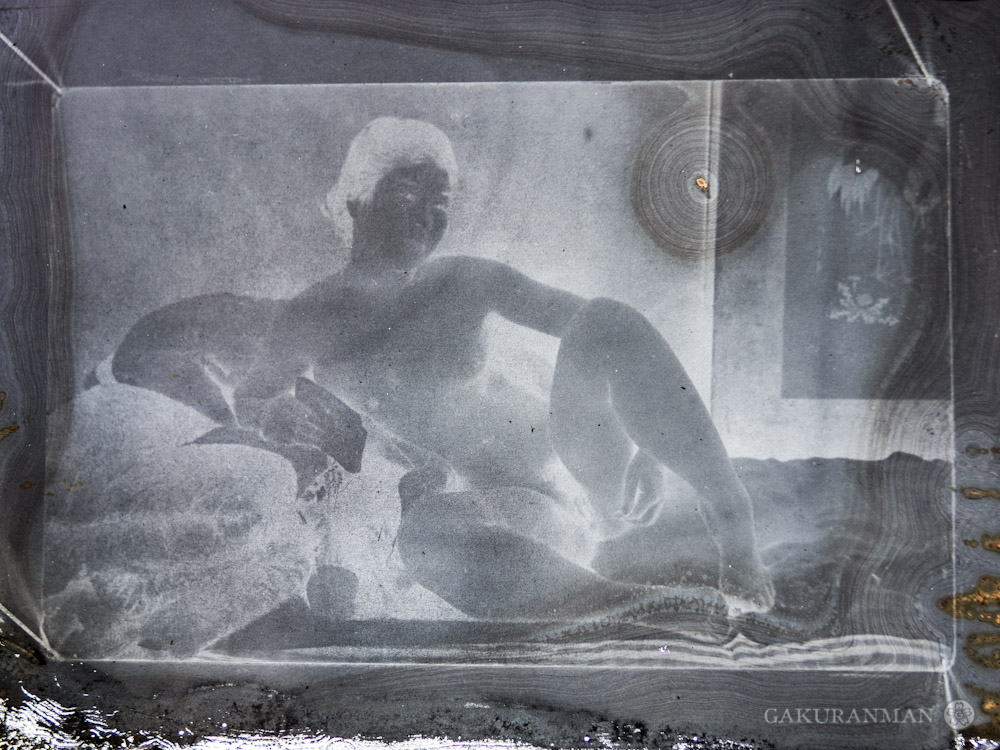
It didn’t stop there, either. The photos got racier and racier as we picked our way through the box, each taking us back more than the last until we were grinning gleefully like a couple of schoolboys.
It isn’t unusual to find adult material in haikyo, particularly love hotels. But it’s not everyday you stumble across Eastman Kodak dry plates picturing vintage adult photography! Of course, I’m not going to deny you the pleasure of viewing them, but first, let me whisk you back home, inside the digital darkroom to my second big revelation.
Into the Darkroom
After the trip and in preparation for writing this article, I uploaded all my photos into Adobe Lightroom and proceeded to go about my usual business of processing them. In today’s digital age of photography it’s quick and easy to view the photographs and to experiment with them in a non-destructive manner. Tweaking colours, adjusting contrast, cropping and selective highlighting are just some of the techniques I use to really bring out the best in an image.
Scanning through this shoot however was quite an unusual experience. I’d never come across dry plates before and knew nothing about them, except that I could make out a photographic negative image when held up to the light. The images contained within the glass were inverted of course – black was white and white, black. While reading up on the history of dry plates and contact printing, I stumbled upon a blog post that detailed one gentleman’s attempt to develop some old dry plates he’d found resting in a barn. One of the methods he’d used was to scan the image in and invert the colours in Adobe Lightroom.
Of course! I’d been aware that the dry plate images I had captured were a form of archaic negative, but I didn’t really think much would be gained from flipping them digitally. I just assumed I’d need to print them in order to see the real picture. But after seeing this person’s success, I decided to give it a try.
I went straight for the gold. One of the raciest photographs I’d found in the Red Villa – a picture of a man and woman in copulation. It was difficult to make much out from the negative and the damage to the plate itself. They were almost nothing more than silhouettes, in fact!
But I began adjusting the sliders for the linear curve. My image went completely black for a moment and then, as if by magic, while I dragged the white slider upwards, a rich, detailed photograph manifested itself in front of my eyes.
“Wow!” I gasped out-loud, quite taking myself by surprise in the silence of my apartment.
“Two foreigners!”
They were to be the first of several captured in the amateur pornographic photography.
I hurriedly experimented using the same technique on the other photos. One by one, real life images appeared, transforming what were originally erotic silhouettes into printable images.
Several of the images were of the same Japanese woman, judging by the facial shape and identical kimono.
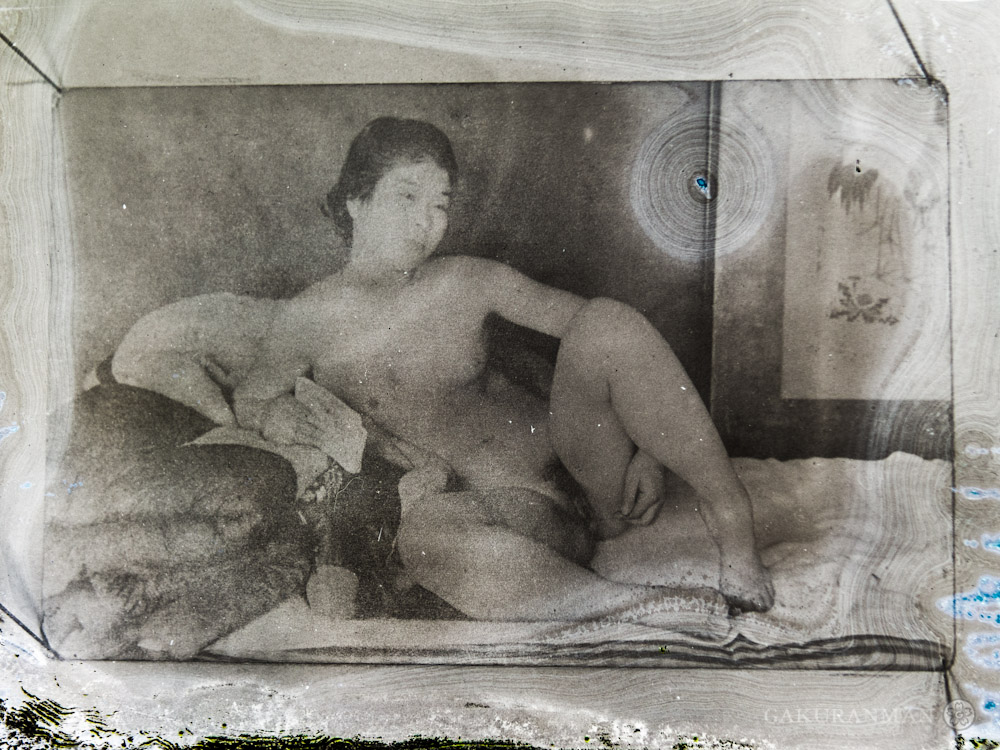
Close-up.
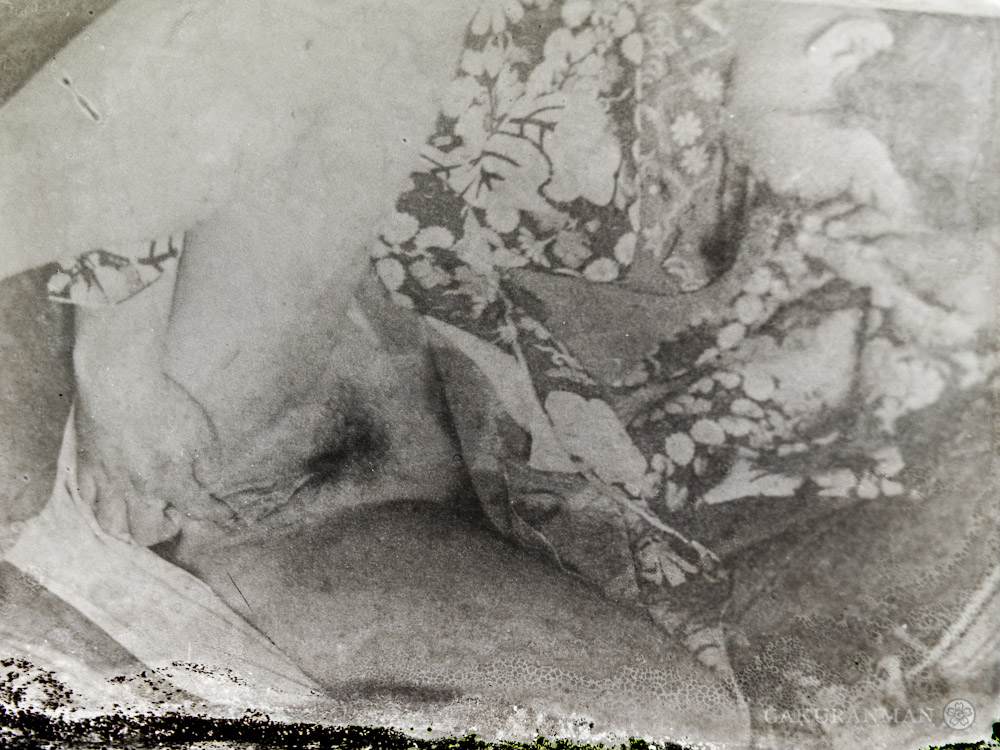
Some others seemed to be a selection of foreigners in rather revealing poses.
But the vast majority of the pictures were of 春画 – Japanese ‘Spring Prints’, a euphemism for woodblock prints depicting erotic scenes. There were so many of these that I chose just one to show here.
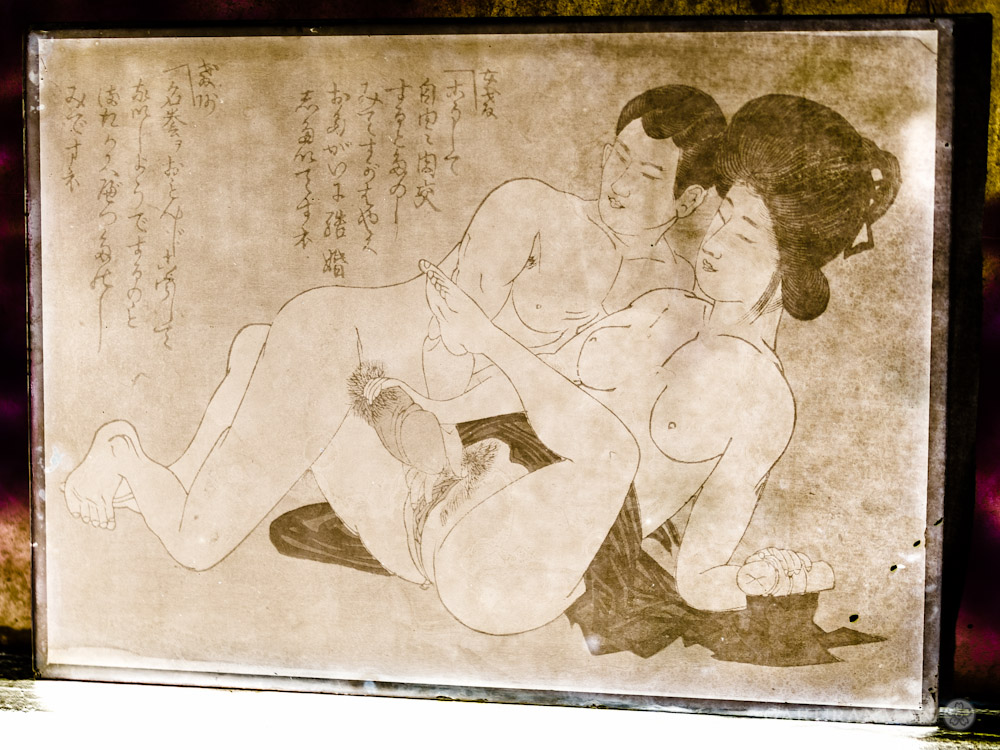
A few things crossed my mind when thinking about all these dry plate images. Firstly, who was the photographer? Evidently a member of the family. Several of the photos showed the same young man in a profile view, very reminiscent of a self portrait. I suspect that this young man could have been the photographer in the family, but since he appears in many photos, that may well be incorrect. After all, the photographer himself is one of the least photographed people!
Above left, the photographer? Above right, the lady who posed nude in the pictures? Could she be the wife of the young man? We see what look to be the two of them together in a family photo below.
Another thought was that most of the pornographic images appear to be photographs of photographs themselves. Look carefully and you can see pins holding the original photo into a board of some kind. It may well be then that our photographer was not an amateur pornographer, but just a man who wanted to make some copies of existing images for his own entertainment, particularly the Japanese erotic woodblock prints.
I took another look through the photographs.
It seems unlikely though, I thought. This woman appears in several pictures wearing the same kimono and in slightly varying positions. If our photographer had taken pictures of other photographs, surely he would have not wasted time shooting the same photograph? The photos of the Japanese lady in particular have an amateur homely quality to them, and the subtle change in her position between a couple of the photos suggests they were taken in sequence. It seems more plausible that our young man, himself was actual the photographer, at least for a few of the adult images. He may have only been using the dry plates to preserve existing photos he had taken and printed before but to which he had since lost the negatives.
Above: A printed family photograph, which shows the mother figure in the front, the father figure in the back and what I guess to be the photographer (far right) and his wife (possible girl posing in the photos).
So there we have it. A mysterious red villa hidden in the woods concealing numerous historical items and the surprise of vintage erotica sealed into dry plates. Certainly not the sort of exploration that happens every time I head out! It was a truly special find and interesting quest digging into parts of the past!
Here’s one last bonus picture.
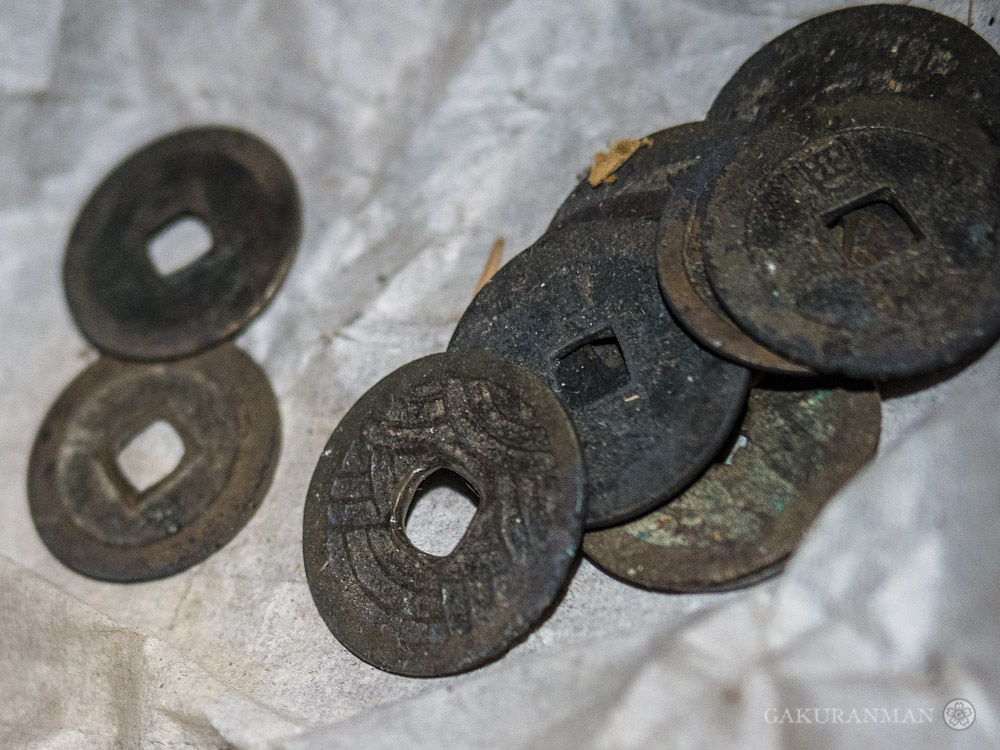
Vintage Japanese currency known as ‘mon‘ that were wrapped up in a tissue in the house. On some of the coins, the words Kan’ei Tsūhō (寛永通宝) are imprinted, which began in 1626 with the Shogun Tokugawa Iemitsu creating a new Chinese-style bronze coinage. Kan’ei Tsūhō means ‘the coin of the Kan’ei era’ and variations of this currency were used in Japan until 1870. My guess is that they were handed down from an elderly relative.
Well then, that really is all for now! Until next time, fellow adventurer!
For more urban exploration and haikyo adventures, click here!










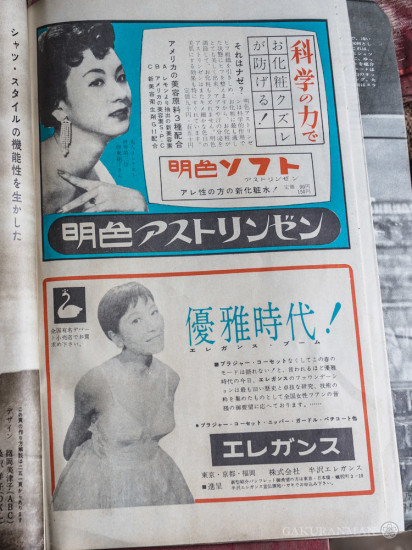
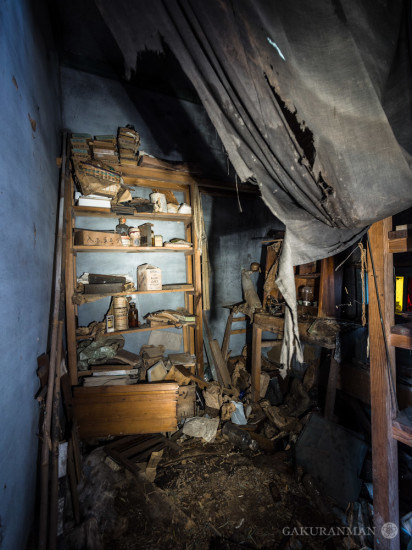
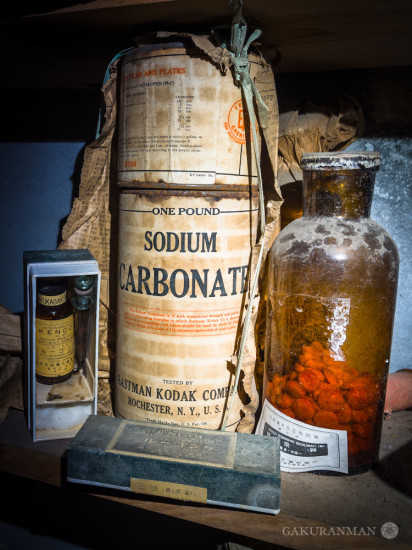
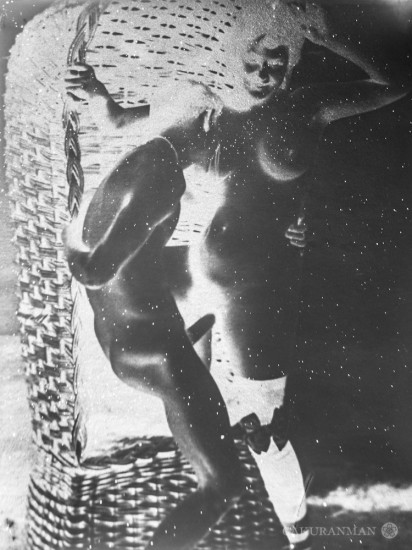
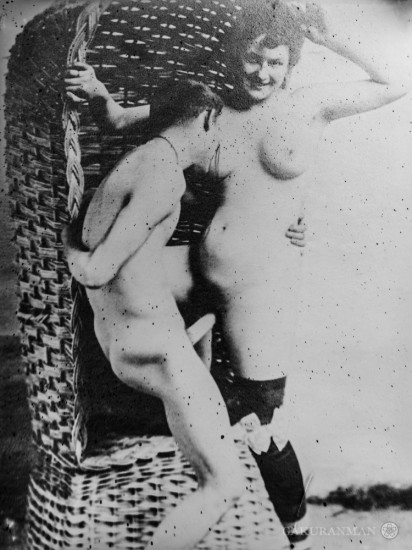
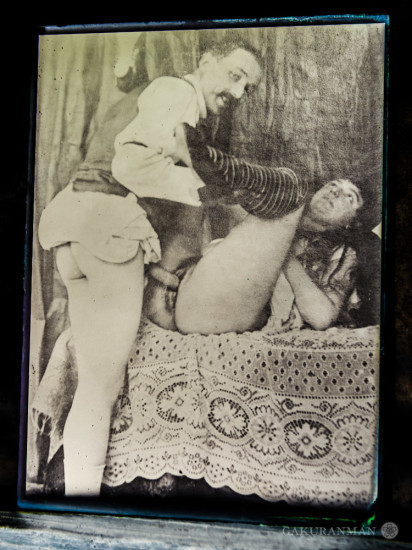
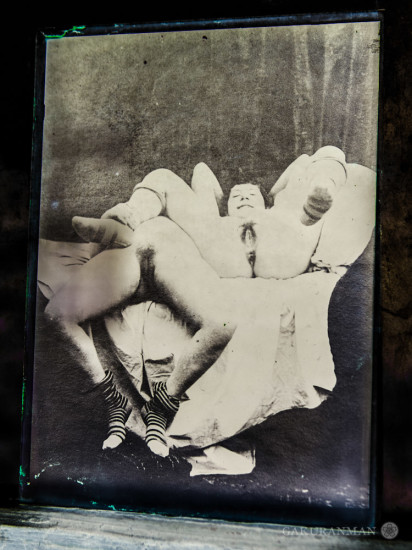
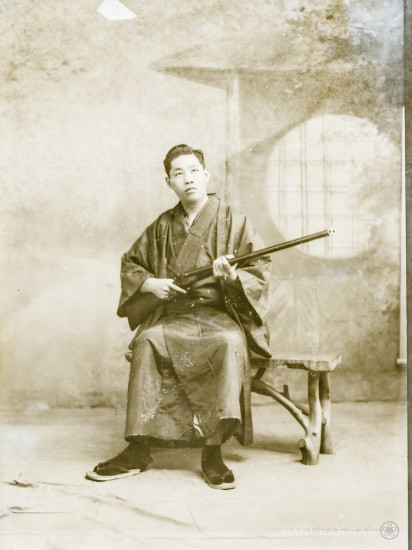
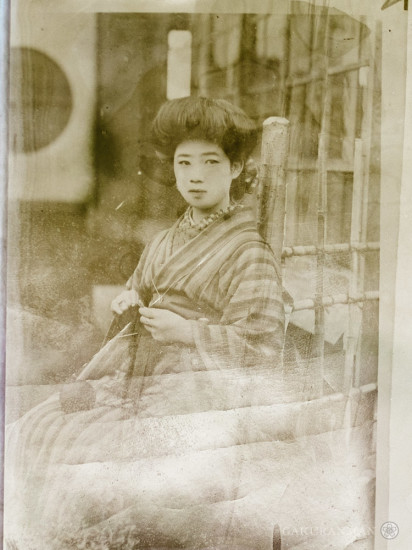

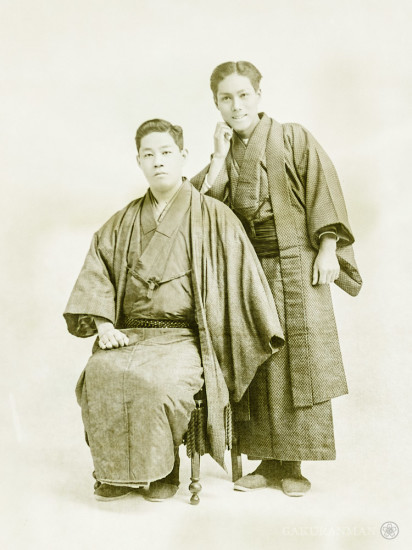
I’m actually mindblown about this place.
We went there yesterday. The place seems to be in a much worse state than what the author of this article witnessed. Unfortunately, there is only one photo left in this site: that of a the “mother” of the family. Someone took away everything else :(
Fascinating! I know that the State of haikyo is never taking anything. But … those woodcuts you mentioned sounds like they should be in a museum somewhere the other things too. Because you call a local museum to see if they want to collect something, sometimes products from that era that no more hesitation in modern Japan. kissus
Hi Michael,
great article here. I was wondering if you had an image of something you mentioned in your text:
“Judging by other older photos in the house, I was tempted to think that this house was abandoned several decades ago, but a modern architecture magazine published in December 1983 shows a vivid picture of the house in great condition, suggesting that it may not have been abandoned until much later.”
I don’t suppose you took a photo of the image in that magazine did you? I’d love to see it.
You are truly living the dream! This is amazing. As I scrolled down the page I was at the edge of my seat with each new surprise!
Thank you Michael, I stumbled upon your site back in 2010 and have been a fan since. I have always been into your urbex and the haikyos you’ve visited. I love your shots esp on the empty room which somewhat capture the atmosphere. Each pic which shows the room or the exterior of the structures made me somewhat present there. When I saw the exterior shot of the Red Villa I was trying to clear all the vegetation around and try to imagine what it looks like during its heyday. And then you came up with the original picture after it was completed…oh its beautiful…and I thank you for that.
p/s: thank you for discovering and sharing the vintage ero…it was somewhat intriguing lol
Hi Michael It was guzen when I bump into your website since I was searching for a topic about Ama divers and I found yours. I must admit it is very good and I went to share your http. blog to others in my Facebook . Then I click on your features under adventures, photographs and etc. and I read this Pink secrets of Villa. I must say when I was reading your write up its like I am reading a book full of mystery and suspense..I like it and how this house was not discovered by other Japanese locals is a mystery but it was good you and your friend had the opportunity to discover this place and learned things about this old house and its history..yatta ne..sugoi jyozu desu, ganbatte ne..jya..arigatou for having a person like you who makes good web blogs and website..
Props to you for leaving the site undisturbed – The urbex field needs more people like you. Just that pile of Japanese mon you pictured is worth well over $100.
I am an avid history buff with a fondness for old houses, hotels, buildings. I am in awe at your discovery and the pure significance of this being someone’s life here. My mind is creating a whole universe for this home. I believe there must be quite the story here and for everything to just be left there… You and your cohort discovered some thing truly spectacular. I do hope you publish all the photos at some point. Id love to see more!
It’s so important that the location of these sites be kept secret so that they don’t get disturbed, or worst vandalised
It’s a shame some of these houses end up the way they do. Since they’re made
in the traditional Japanese fashion using bamboo,mud and plaster and then clad in wood, they can deteriorate very quickly if they’re not maintained.
Another amazing blog and selection of photographs! The porno score was a bonus!!!
I know right ? Best part .
Great stuff once again. I almost had my eggs go cold for not wanting to look away from the computer this morning.
We wouldn’t want that! Thanks for reading and commenting :).
You are truly living the dream! This is amazing. As I scrolled down the page I was at the edge of my seat with each new surprise!
That’s the way it should be :D. Glad I was able to convey that in the writing!
Fascinating! I know the rule of haikyo is never to take anything. But… these pictures seem like they should be in a museum somewhere (maybe some of the other stuff too). It’s a shame to think that the building is going to come down (sooner rather than later by the looks of it) and all this is going to be lost forever.
It’s something that did cross my mind, but as with the Royal House, these people seemed to be normal men and women who were just had a higher quality of life than most. I can see the value in preserving certain items in a museum though, but it’s tricky to figure out how much historical importance or significance the dry plates have, especially given the poor condition most of them are in. Further to that, it is likely that some distant relative still owns the land and is reluctant to demolish the property because they would lose their fixed-asset tax benefits on the land, but at they appear to have little interest in maintaining the property. Removing items would require permission from the property owner, and getting in contact would probably be a quest in itself!
Vintage labels, items and magazines are a delight :) Good eye man! The first detailed picture emerging on adobe lightroom must’ve been such a eureka moment :D
Indeed it was! I didn’t embellish it in the slightest in saying that I gasped out loud!
Fascinating discoveries! Thanks so much for sharing this!
You’re very welcome! It’s incredibly interesting to research the past by piecing together information from objects left behind.
Great write up Mike! I enjoyed reading the details, it took me back to when we discovered the dry plates the first time round… Interesting theory about the two families merging through marriage too, makes sense. I hadnt thought about converting the plates on LR, they look great now, and the couple are gaijin!? Wow! Now that did surprise me! Looking forward to looking through my negs now :-)
Cheers Ben. I hadn’t even considered flipping the photos myself, but I’m mighty glad that I did after finding that blog post. It truly was another moment that took my breath away in the early hours of the morning while I processed my pictures :).
Your haikyo partner was just lucky this wasn’t in a snowy region.
There’s an idea! To come back in the snow :D